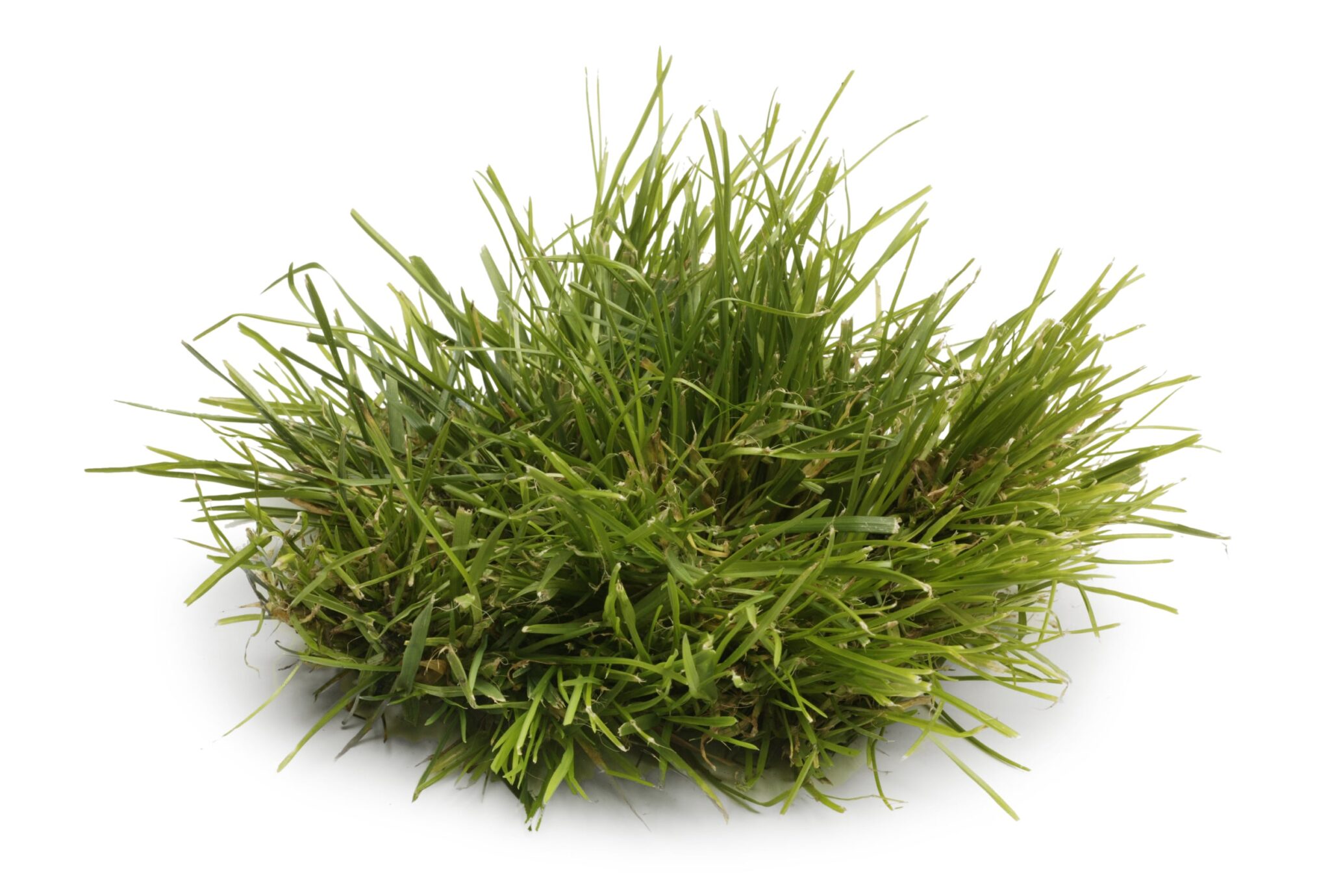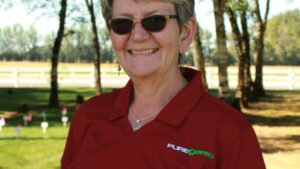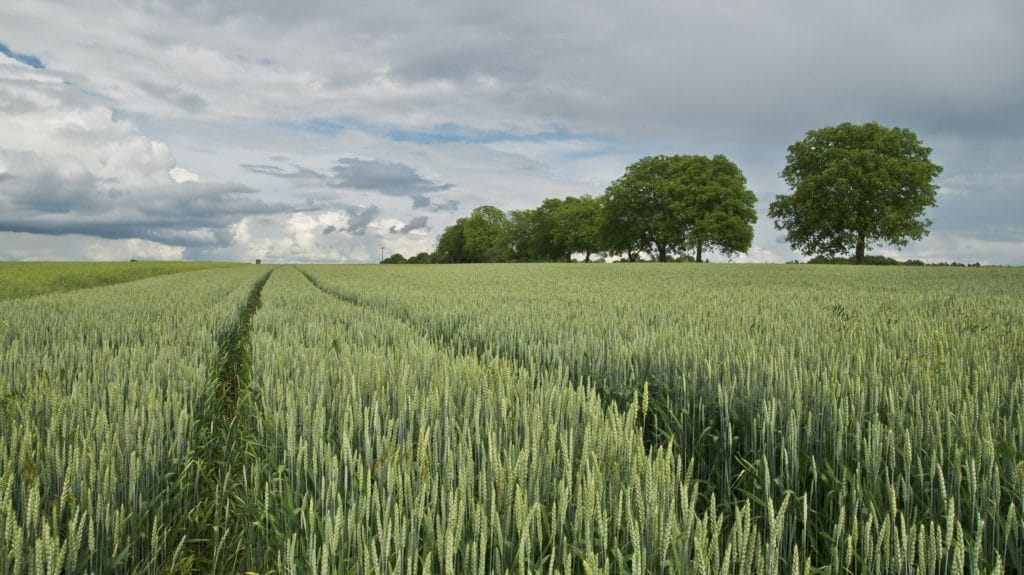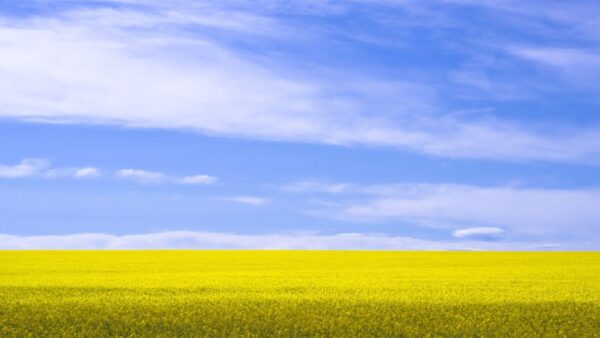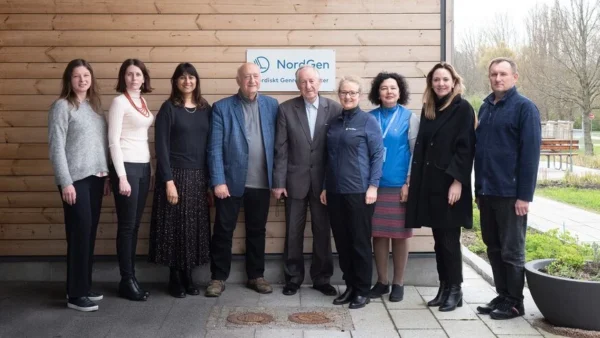Click here to read the first part of this story.
Poa pratensis, also known as Kentucky bluegrass, Smooth-stalked meadow grass or Smooth meadow grass, is a top choice for lawns, golf courses and sports pitches as it guarantees a strong surface. In our last issue, leading Poa breeders provided insight into their main goals and the challenges of working with this complex and hardy plant. Now, in Part 2, the focus is on disease resistance, access to genetics and innovation.
Our breeder panel includes: Henk van der Aa, Smooth Meadow Grass Breeder, DLF; Dr. Christoph Grieder,Forage Crop Breeder of Agroscope, Zürich in Switzerland and Dr. Christian Ochsenbein, General Manager at DSP; Tim van der Weijde, Grass Breeder & Research Station Manager at Barenbrug Holland BV; Cody Gyllenberg Assistant Operations Manager at Columbia River Seed & Tom Brentano, owner and breeder at Novel Ag; Crystal Rose-Fricker, President of Pure Seed & Pure-Seed Testing, Austin Fricker, VP of Research at Pure-Seed Testing and Dr. Melodee Fraser, Director of Research at Pure Seed Testing East; and Cord Schumann, Head of Turf Grass Breeding at Deutsche Saatveredelung (DSV).
Disease and crop protection
Yellow rust (Puccinia striiformis) is the most important disease in P. pratensis, but all breeding companies continue to make progress with resistance within their genetic pools. Some of the secondary disease concerns are summer patch, Leaf spot, Dollar spot, Powdery mildew (in shaded areas), ergot, brown rust, orange stripe rust Helminthosporium fungi and red thread.
“There aren’t really any new disease threats these days,” notes van der Aa, “but some of the fungal diseases are gaining ground with the warming climate. That especially applies to orange stripe rust, which can get quite severe in warm and humid summers, especially in seed production plots.”
And in seed plots, there has been a significant impact in Europe because, since about five years ago, there is a reduced number of crop protection products available to breeders. However, Gyllenberg says “for the most part, we’ve never had good chemistry for the grassy weeds we are trying to target, and so these losses, while significant, have not been industry-killers.” Whilst he and his colleagues would like to see more trials and labels for products used with P. pratensis, the small size of the industry makes it rather unlikely.
Grassy weeds are a particular challenge because there are virtually no herbicide options for seed production in an annual crop rotation. “This leads to excessive rogueing costs and potentially the loss of entire fields if strict rotations are not followed,” Gyllenberg says. “With weeds such as Alkaligrass (Puccinellia spp.), the seed lasts in the soil for many years and will return every time a P. pratensis rotation is attempted. This is a huge, worsening problem with a lack of feasible solutions.”
For their part, Grieder and Ochsenbein believe P. annua is the biggest problem in seed production, as it is very difficult to have swards clean of this weedy grass. To facilitate the identification of P. annua plants, early generations in the seed multiplication process are therefore examined by planting pre-grown plantlets to the field. “Additionally, the ‘thousand seed weight’ of our sexually-reproducing material is relatively small, limiting its distinctness from P. annua, so we also focus on increasing that in P. pratensis,” says Ochsenbein.
Schumann reports that at DSV, they’ve been using additional mechanical weed control in breeding nurseries today, which adds costs, and he agrees that European seed production is more and more affected by herbicide restrictions. “I predicted already years ago that the professionals, like sod growers, will have to deal with the situation, that no crop-free (i.e. Poa annua free) material is available anymore. Maybe the quality-standards have to be adapted to this future situation, which will arrive with more pesticide-restrictions.”
In seed production at DLF, they’ve put the focus on breeding varieties that are more competitive against weeds through faster establishment. “This of course has to be combined with disease tolerance and a high seed yield,” says van der Aa. “When we’re successful in accomplishing these tasks, we’ll be less dependent on some of the plant protection products that we need today.”
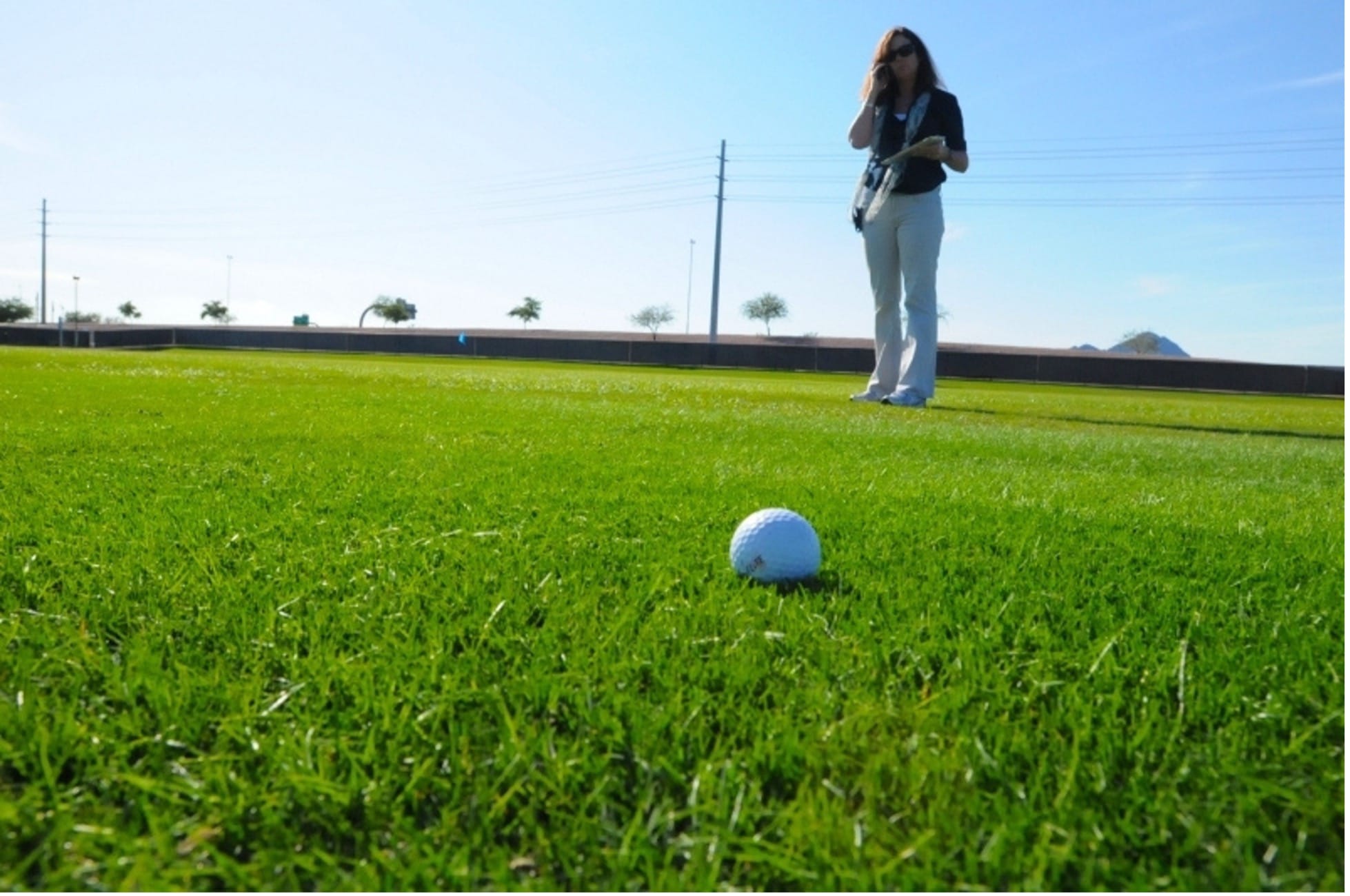
hasn’t traditionally due to advancements in breeding and
genetics,” says Crystal Rose-Fricker, co-owner of Pure Seed.
Other seed production challenges
Seed yield in forage types is relatively small and Ochsenbein adds that continuous improvement is needed on this front to increase commercial success of new varieties.
Schumann points to “very big problems” that exist today in the production of high-quality P. pratensisvarieties. “We can use only crop-free seed lots for the professional-markets. These crop-free materials we produced in the past in the US, but today the US producers are very strongly focused on the seed yield varieties, and it is difficult to produce the very high-quality varieties with a lower seed yield-potential.”
In Brentano’s view however, there are many ways the industry can improve and utilize ‘resource-smart’ approaches in grass seed production, many of which are often overlooked. “Consider the multiplication process of an individual cultivar with improved seed yield,” he says. “It consumes fewer acres, less irrigation water and has lower fertilizer consumption per pound of seed available to the user.”
At companies like DLF, seed production for P. pratensis is done in cooperation with specialist farmers. “The seed production for this species is complicated,” says van der Aa. “Farmers have to accept slow germination and establishment, and the field has to be sown early in the year. Only the tillers which are developed before winter will be vernalized and set flower heads the following summer.”
Because of the early sowing, P. pratensis is normally sown under a cover crop which can be harvested in the first summer. Van der Aa explains however that the cover crop should not be too dense so that it allows this grass to get enough sunlight to establish. “Also weed control calls for special attention from our seed growers, especially weeds like P. annua or rough-stalked meadow grass (P. trivialis). It’s impossible to separate seeds from these grass weeds from P. pratensis.”
“For us, Poa annua is a major problem, both in the established turf trials as in breeding nurseries,” says van der Weijde. There is only 1 herbicide effective against Poa annua and not against Poa pratensis and one can only use it once per year. And this is especially a problem because Poa pratensis is a bit slow to establish, while Poa annua is quick to grow and sheds seeds in a matter of days.
DLF’s seed production of this species is concentrated in the SE regions of Denmark, in the Netherlands concentrated in Zeeuws Vlaanderen, and in the US in Washington and Idaho.

Sources of genetic diversity
In addition to their own collections, P. pratensis breeders use other sources. DSV uses varieties and advanced breeding lines for off-type selection, and collects new ecotypes. Pure Seed uses landrace collections and genebanks in their breeding programme. Columbia River Seed/Novel Ag primarily use their own collections but have accessed university collections and genebanks as well. DSP/Agroscope works with older breeding material that is mainly based on original ecotype populations (local Swiss genetics, collected in-situ). DLF broadens its genetics through collecting ecotypes and always looks for interesting ‘off’ types in its breeding efforts.
For some, the new regulations on access and benefit sharing have made sourcing new genetic material for breeding P. pratensis a challenge. The Rio-Regulations in particular, says Schumann, pose difficulties.Barenbrug focuses on crosses between elite materials from their research departments across the world, but also makes limited use of collecting ecotypes in interesting natural environments.
Close contact with growers
As is the case with any crop, breeding companies must maintain close relationships with their markets to ensure their breeding programs are aligned with industry and end-consumer needs.
At Pure Seed, “we work with growers in all production areas doing trials and releasing the results to the grower groups and licensees,” explains Austin Fricker.
DSP/Agroscope focuses on the demands of the Swiss National List of Recommended Varieties, which fully reflect demands from growers. DLF breeders are in close contact with end-users via their sales department but also has demonstration-plots in several sites where visitors and customers can personally observe how different varieties and mixtures perform in different situations. “We also do tests and trials in cooperation with customers to compare different solutions in real-time,” says van der Aa.
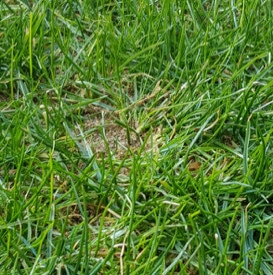
Measuring yield in forage types
Breeders of P. pratensis often trial in many different production regions because, as Crystal Rose-Fricker explains, varieties will perform differently. Learning where it achieves the highest yield can take many years. Yield is measured classically as it is for other grass species, but Grieder explains that in the breeding nurseries with spaced plants, they rate biomass visually.
At DLF, dry matter yield is measured using a Haldrup harvesting machine, and a near-infrared camera is mounted on the machine which measures parameters like dry matter, protein and sugar content, and fibre digestibility.
Innovations in the pipeline
Pure Seed is currently using molecular markers for preliminary screening to identify apomictic lines. DSV is continually in close contact with colleagues who work with field crops like canola and may adopt the new molecular techniques being used with them in breeding P. pratensis in the future.
At DSP/Agroscope, Grieder reports that a new innovation has just started to be put to use, but he cannot comment further at this time. As P. pratensis is still a minor crop compared to the other grass species in their breeding program, his group has not used molecular techniques to this point.
Gyllenberg shares a few developments from various institutions. Shawn Bushman at the US Department of Agriculture “has had quite a bit of traction sequencing the genome.” In addition, Michael Neff at Washington State University is in the process of characterizing vernalization genes, and scientists at Rutgers University have released a DNA typing study.
Van der Weijde mentions that P. pratensis is a genetically complex species with very limited availability of molecular tools, so breeding is very ‘visual phenotype’ based. Innovations therefore can be found in more accurate screening of genetics in new and diverse environments, such as rainout shelters. “Another big innovation from Barenbrug in this species is its seed enhancement (Barenbrug’s yellow jacket water manager). This seed enhancement greatly increases the success rate of both germination and establishment, the most difficult phase for P. pratensis. Once it is properly established, it is a very strong grass!” he adds.
NBT use
In terms of whether new plant breeding techniques (NBT) will provide benefits in future breeding of this grass species, van der Aa notes that the high degree of genetic complexity (being an apomict) of P. pratensis results in having up to 12N pairs of chromosomes. “Perennial ryegrass in comparison has 2N or 4N,” he explains. “Keeping that in mind, we have prioritized developing the possibilities of new breeding techniques in some of the major grass species. Looking forward we believe that NBT could be valuable tools in P. pratensis breeding in years to come. We already use flow-cytometric to verify the ploidy in offspring, which shows morphological differences from their parents.
Grieder notes that NBT might be very useful to improve some of the rather qualitative traits, for example, reduced lignin.
For his part, Schumann sees a role for NBT in P. pratensis breeding but it must be cost-effective. He points to germination testing as an ongoing topic of discussion where improvements are needed. He and his colleagues have observed large differences in test results among various labs, even though they use the same ISTA Protocol. “More research seems to be necessary to achieve highly-reliable results,” he says, “and maybe adaptation of the ISTA Protocol is needed.”
Related Articles:


